AUBIO 230: Topic 4.2 (Membrane Transport)
1/44
There's no tags or description
Looks like no tags are added yet.
Name | Mastery | Learn | Test | Matching | Spaced |
|---|
No study sessions yet.
45 Terms
Transporters (function)
move most small, water-soluble (hydrophilic) organic molecules and some inorganic ions across cell membranes
Passive transporters (function)
move a solute along its electrochemical gradient
Features of Passive Transport
-conformation changes in the presence of solutes to be transported occur randomly and are reversible
-solute binds to binding site of transporter when binding site is exposed to face solute
-very specific on form of solute
what determines which side the binding of a solute to a passive transporter occurs on?
the concentration gradient
3 conformational states of passive transporters
1. outward-open state (binding sites exposed on outside)
2. inward-open state (binding sites exposed on inside of bilayer)
3. occluded state (sites not accessible from either side)
What doesn't and does the function of the transporter depend on
whether the solute-binding site is occupied, depends on the concentration gradient
Pumps (function) (active transport)
transport a solute against its electrochemical gradient/concentration gradient
Features of pumps in active transport
-need to be supported b/c not E favourable
-different types can operate at same time and be linked together
-3 types
3 types of pumps
-Gradient-driven pump
-ATP-driven pump
-light-driven pump
Gradient driven pump
moves 1 substance down gradient, so E is released during process & used to drive the other substance
ATP-driven pump
driven by E produced during ATP hydrolysis (ATP converted to ADP gives off E)
Light-driven pump
-occurs in photosynthetic organisms
-uses light to move molecules against the concentration gradient
Different forms of active transport can be _______________? (fill in blank)
coupled
Direct active transport (may not need to know from figure)
invovles transport system coupled to exergonic chem. rxn like hydrolysis of ATP
-ATP hydrolysis drives outward transport of proteins, establishing electrochemical potential for protons across the membrane
indirect active transport (may not need to know from figure)
-involves the coupled transport of a solute and ions
-exergonic inward movement of protons provides E to move the solute against its concentration gradient/electrochemical potential
Example of ATP-driven pump
sodium potassium pump/potassium pump
sodium potassium pump
-in animal cells
-uses E supplied by ATP to expel Na+ and bring in K+
-drives sodium into cytosol
-ATP driven pump coupled to gradient driven
How many sodium ions and potassium ions does the sodium potassium pump move at once?
3 sodium
3 potassium
Steps of the sodium potassium pump
1. Cytosolic Na+ binds transporter (pump)
2. phosphorylation by ATP of cytosolic face of pump
3. triggers conformation change of pump to face external environment transferring Na+ across the membrane and releasing it outside of the cell
4. K+ binds from external space to same pump
5. Pump dephosphorylates itself
6. protein returns to original conformation (inside), transferring K+ across the membrane to release it into the cytosol
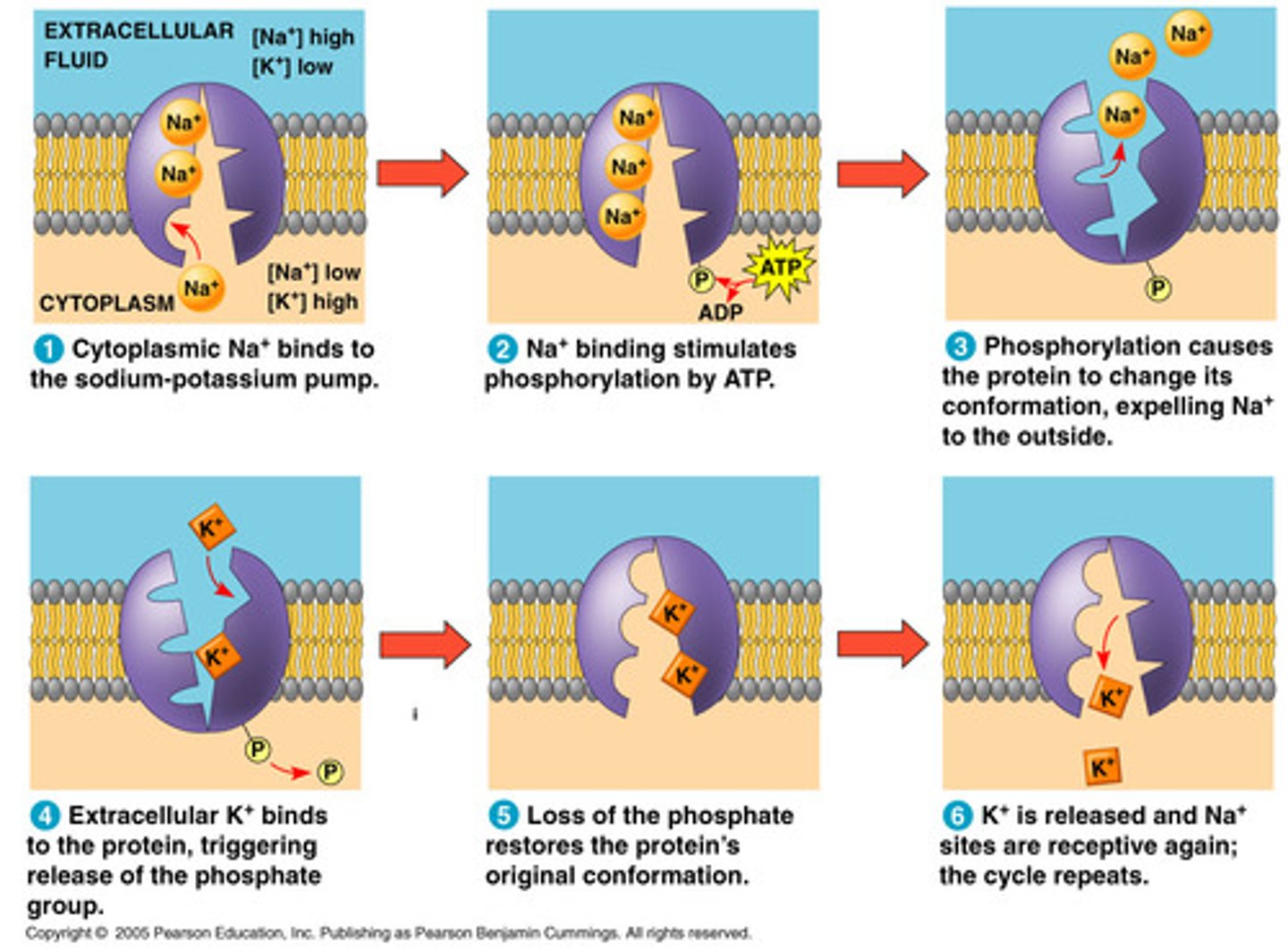
What does the Na+ pump generate
a steep concentration gradient of Na+ across the plasma membrane
Describe the steep concentration gradient of Na+ across the plasma membrane
-high amount of Na+ outside and low amount inside
-the flow of other ions in the cell is linked to this gradient for energy of materials going against the gradient
(like a dam: water behind dam has PE, can be converted into KE which is converted into electrical E and can be used for other processes requiring E in the cell)

Ca2+ (calcium) pumps function
keep the cytosolic Ca2+ concentration low (cytosol can be external or internal depending on relation to the cell)
Ca2+ pump (features)
-works exactly sodium pump
-ATP driven pump b/c more Ca2+ on outside which Ca2+ needs to move to
Ca2+ pump steps
-uses ATP to phosphorylate itself induces series of conformational changes similar to Na+ pump
-when pump opens to lumen, Ca2+ binding sites are eliminated, ejecting 2 Ca2+ ions into the organelle
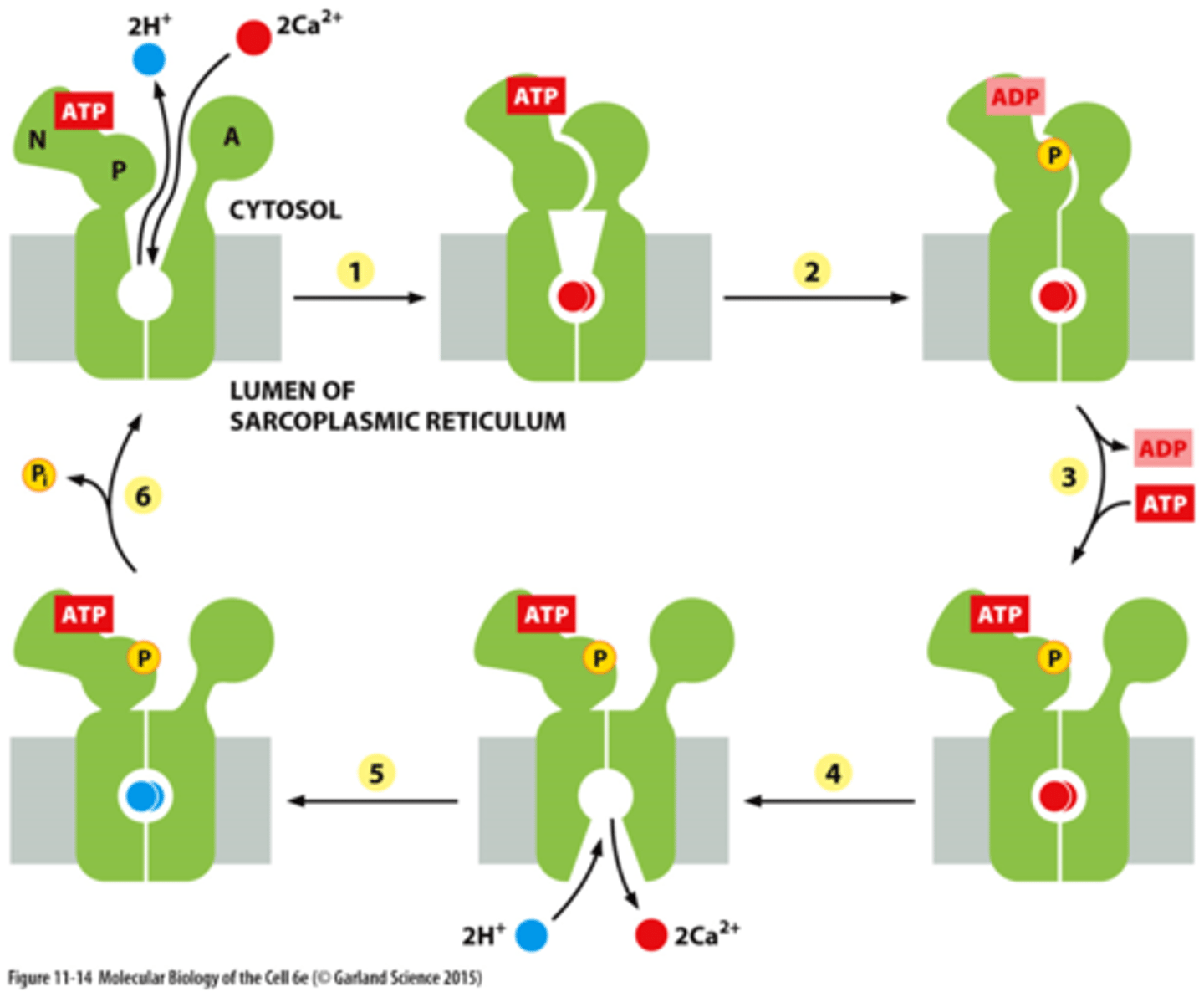
How is the Ca2+ pump similar to the Na+-K+ pump?
-both ATP driven
-in terms of amino acid sequence and structure
Gradient driven pumps (function)
exploit solute gradients to mediate active transport
How can gradient-drive pumps act as
symports or antiports
symport
transfer solutes move in same direction
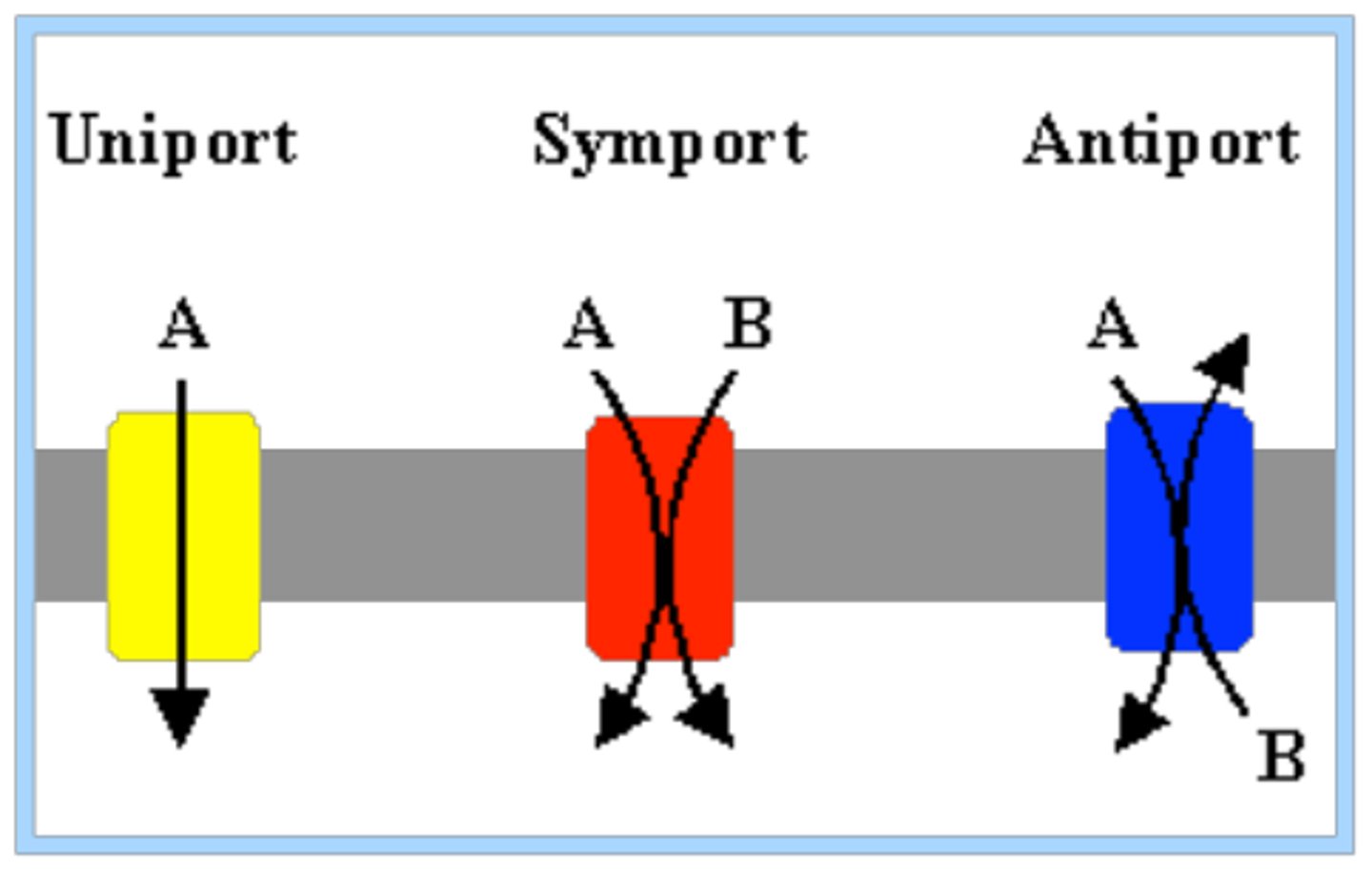
antiport
transfer solutes move in opposite direction

uniport (NOT a pump)
-only facilitate the movement of solute down its conc. gradient
-unidirectional
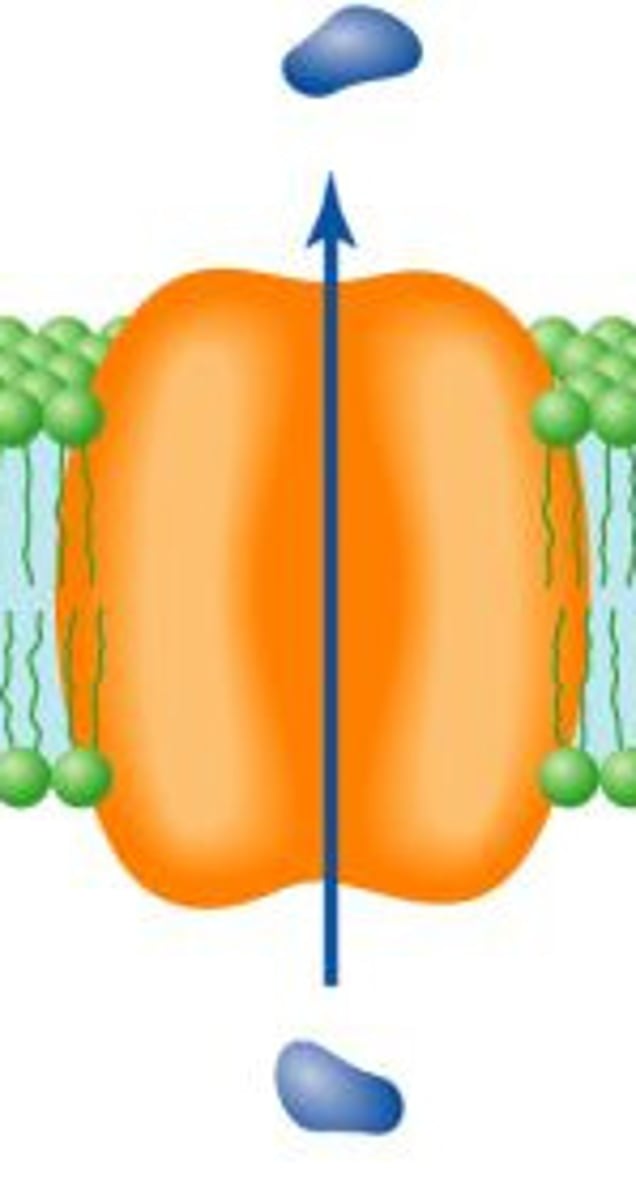
What does the electrochemical Na+ gradient drive?
The transport of glucose across the plasma membrane of animal cells
Glucose-Na+ symport
-uses electrochemical Na+ gradient to drive the active import of glucose
(example of how glucose is transported)
Glucose-Na+ symport steps
1. transporter pump is occluded and empty
2. transporter pump opens outward and Na+ and glucose bind
3. Pump goes to occluded state again
4. Pump changes conformation opening inwards and brings Na+ and glucose inside (cytosol)
5. pump is now occluded and empty
(Na + was brought from extracellular space and extracellular space to cytosol, glucose gradient is going from cytosol to extracellular space)
What do plants, fungi, and bacteria use instead of Na+ pumps
H+ gradients for solute transport
What do plants, fungi, and bacteria lack in which animal cells do not lack?
na+ pumps
H+ pump steps
-H+ pumps in PM pump protons out of cell, creating an electrochemical gradient and acidic environment outside the cell
-H+ symports move sugars and AAs into the cell using H+ gradiant (similar to Na+ pumps in animal cells)
What do electrochemical proton (H+) pumps drive?
the transport of solutes in plants, fungi, and bacteria
Animal cells transmembrane pumps to drive the active transport of solutes
electrochemical Na+ gradient across PM< generated by Na+ pump isused by symports to import various solutes
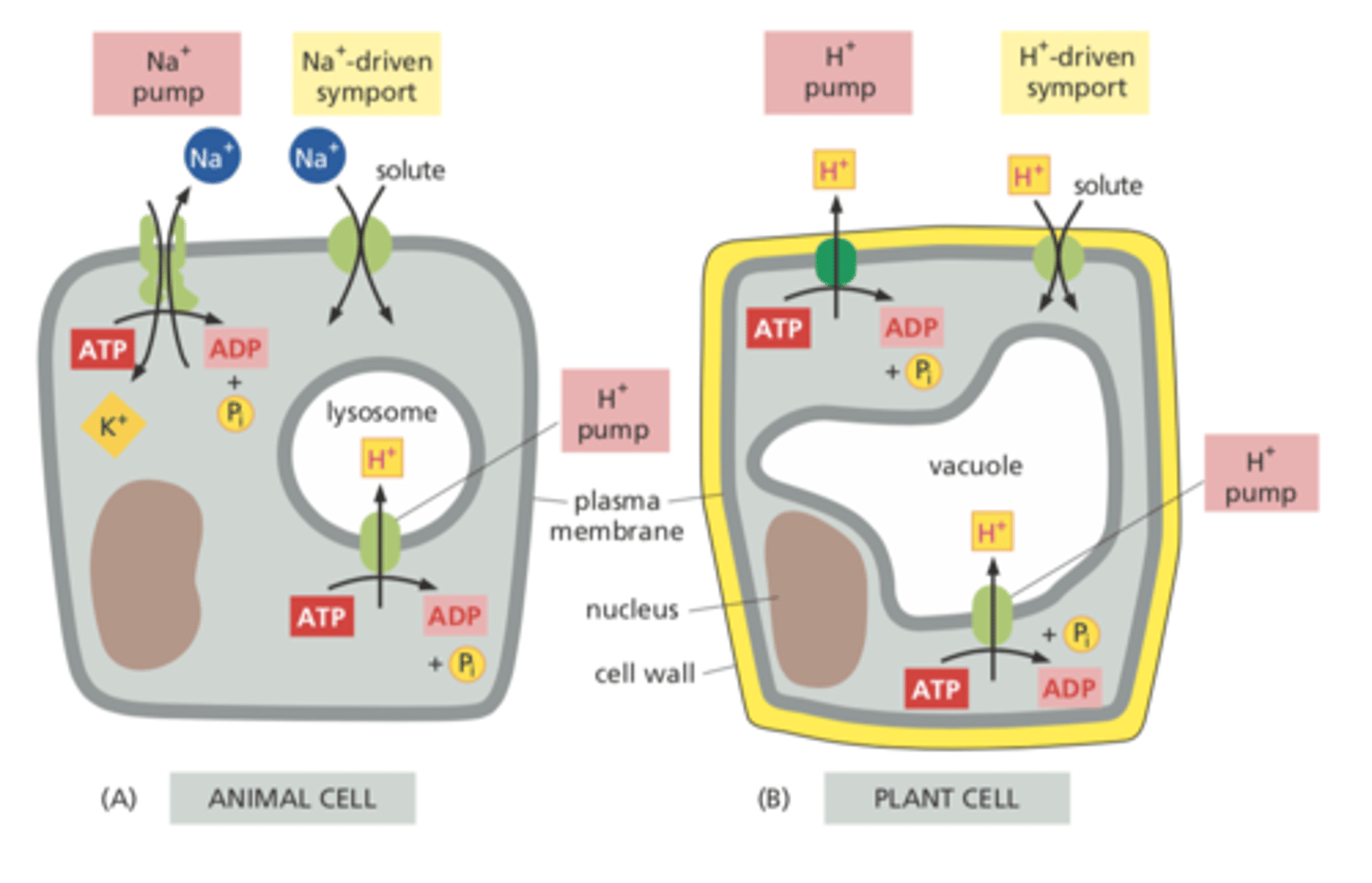
Animal cells transmembrane pumps to drive the active transport of solutes
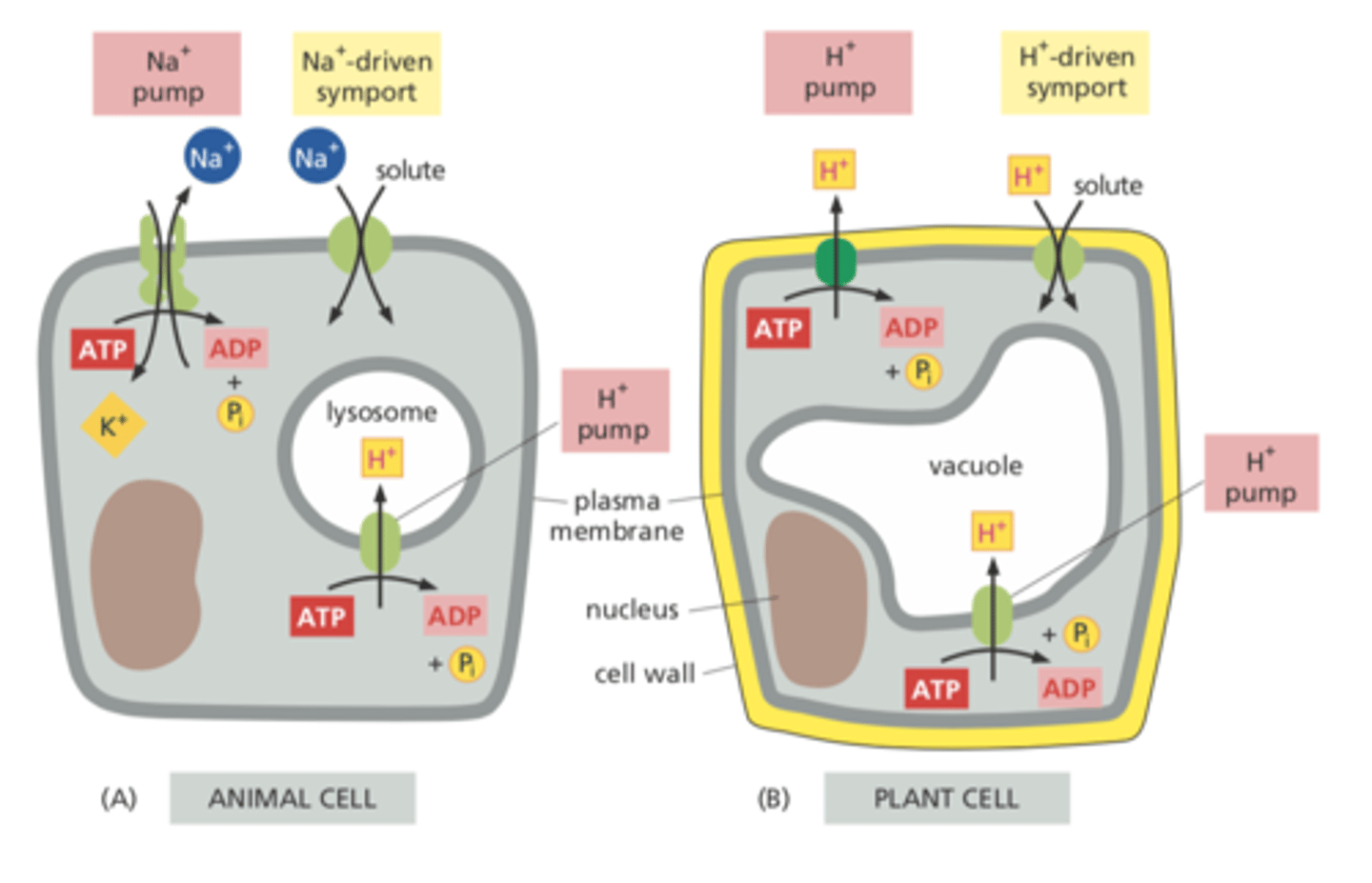
plant cells transmembrane pumps to drive the active transport of solutes
plant cells: electrochemical proton gradient set up by pump that moves H+ across PM and into the cell wall is used for this purpose (similar strategy for bacteria and fungi)
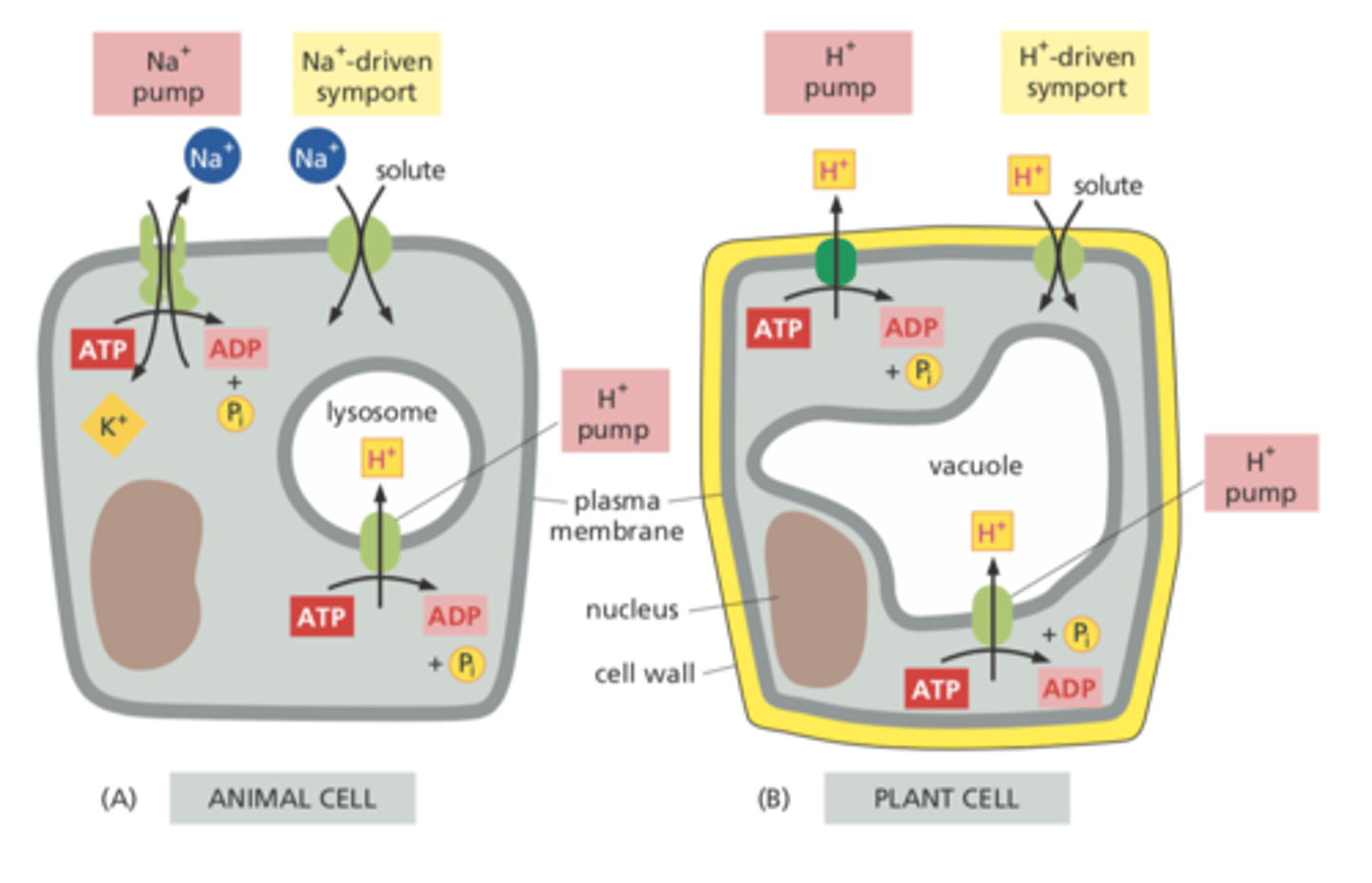
Similarities between animal and plant cell transmembrane pumps driving the active transport of solutes
Lysosomes in animal cells and vacuoles in plant and fungal cells contain a similar H+ pump in their membranes that pumps in H+, helping to keep the internal environment of these organelels acidic
Mechanisms for creating H+ gradient
-light-driven
-ATP-driven H+ pumps
light-driven pump (define)
-in photosynthetic bacteria
-reacts to light E driving movement
ATP-driven H+ pumps (define)
use ATP hydrolysis to power H+ Pumps (Like Na+ or Ca2+ in animal cells
ATP-driven H+ pumps (3 features)
-specialized ATP-depended H+ pumps transport H+ from the cytosol into certain organelles (lysosome in animal cells, central vacuole in plant/fungi cells)
-maintain neutral cytosolic pH
-keeps pH of interior of organelle (lumen) acidic, which is crucial for their functions